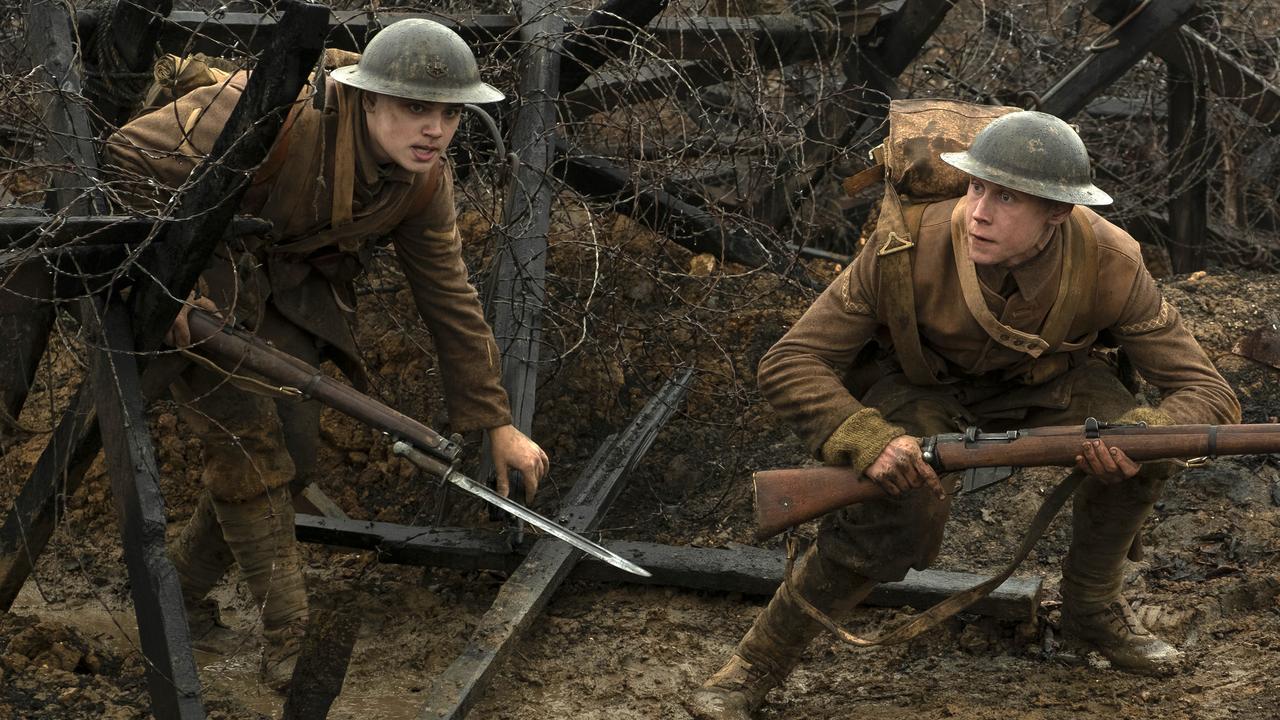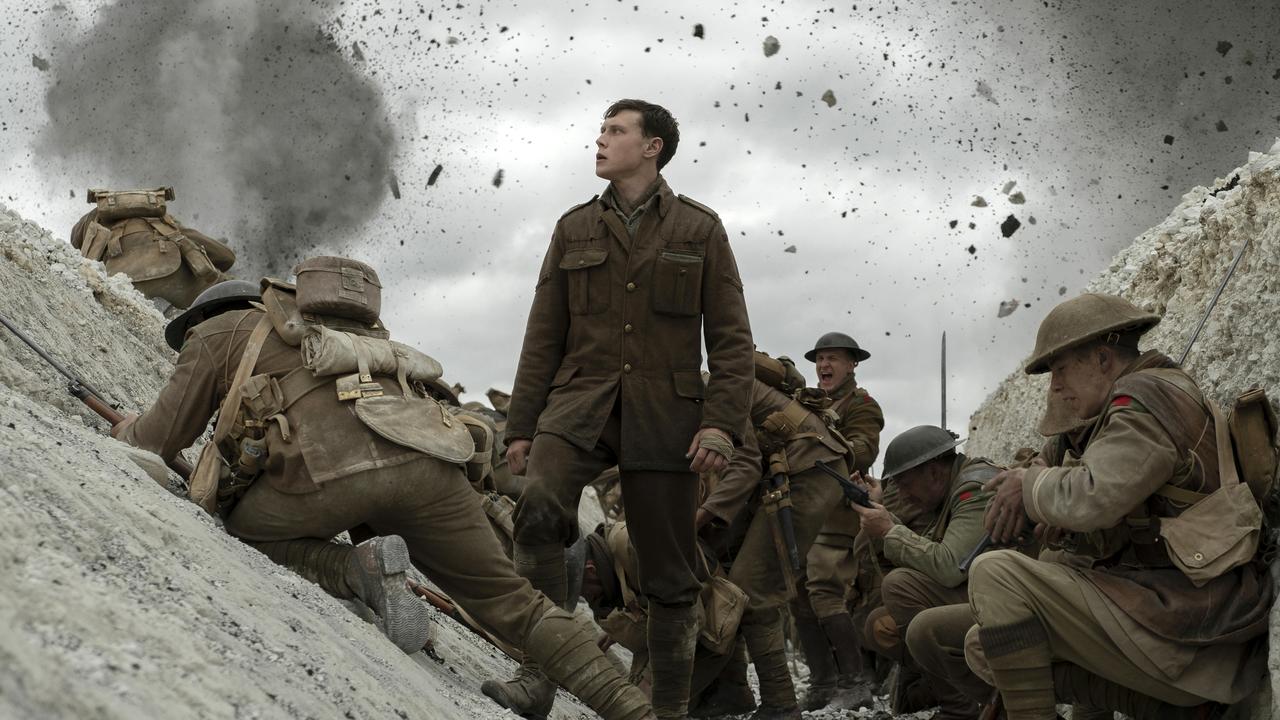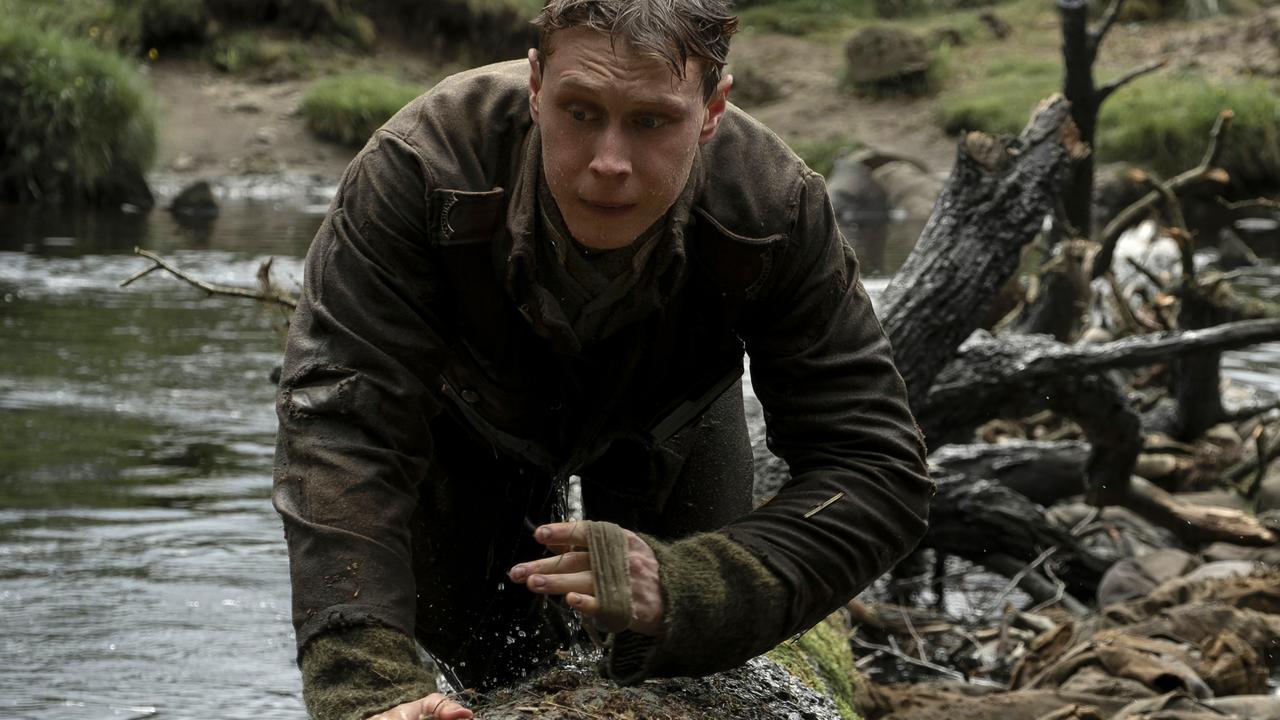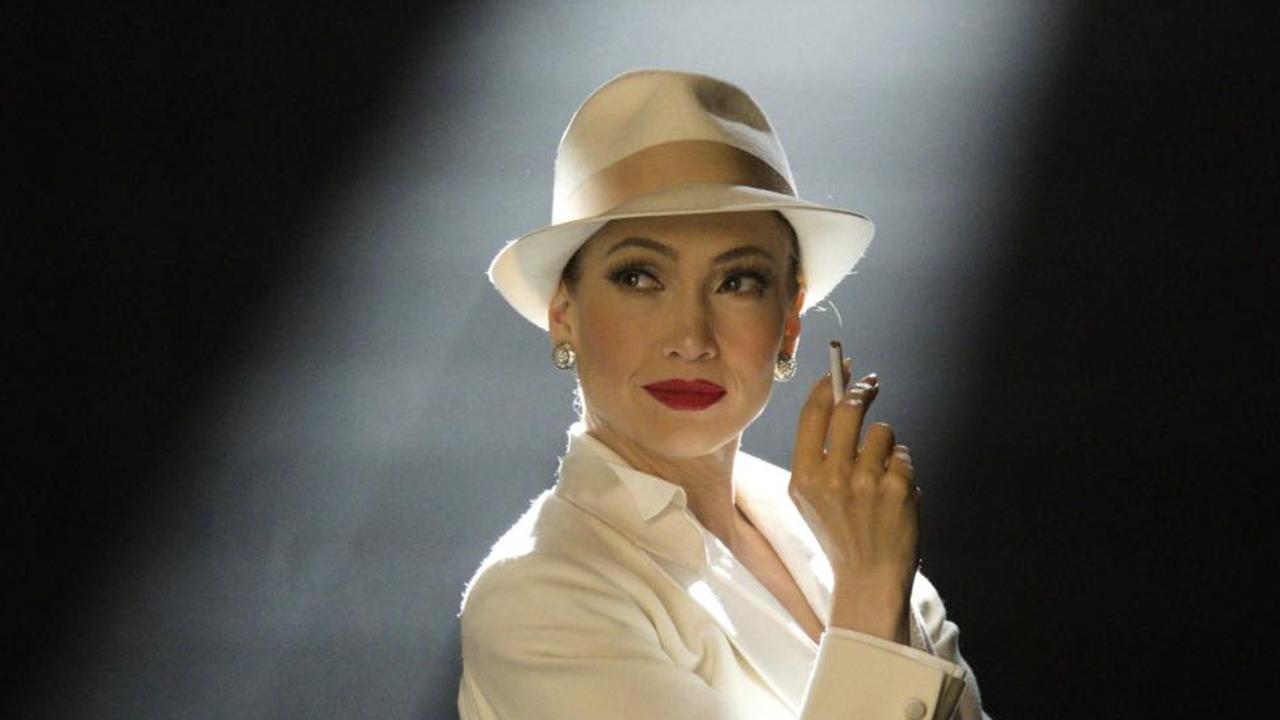1917 is an immersive, technical feat with emotional stakes to match
It just won two major awards and is nominated for nine more. Australians will get a chance to see for themselves what all the fuss is about.

A movie made to look like one continuous shot sounds like a gimmick, but when it’s employed to such great effect, as it is by co-writer and director Sam Mendes in his war film 1917, it marvels.
The movie opens in Australia this week fresh off the back of its double Golden Globes wins for best drama and best director. It’s an immersive, visceral and meticulously crafted film that has the emotional stakes to match.
The story is simple, and it’s the contained discipline of the narrative that enables Mendes to pull off his ambitious technical feat without getting bogged down in too much scale.
Set during World War I, the film follows one mission entrusted to two young soldiers, Schofield (George MacKay) and Blake (Dean-Charles Chapman).
They’re to deliver a message to the 2nd Battalion of the Devonshire Regiment to call off a planned attack against the retreating German troops. The Germans have set up an ambush and 1600 men, Blake’s brother among them, are about to be killed if Blake and Schofield don’t get there in time.

They’re relatively junior but they’re fast, and one of them is great at navigation. So they’re sent over the lines, across No Man’s Land and beyond.
MacKay and Chapman are not household names, yet, with MacKay about to star as Ned Kelly in Justin Kurzel’s The True History of the Kelly Gang out this month and Chapman best known for playing the doomed Tommen Baratheon in Game of Thrones as well as Billy Elliot on stage in London.
But the pair of youngsters anchor this film with committed performances that demanded a vigorous physicality,and emotional range. Schofield is the quiet one, having suffered through the nightmare of the Somme, while Blake is younger and more effusive.
While there are specificities to each character, they also stand in for the everyman caught up in the scourge of global conflict.
More recognisable names – Colin Firth, Andrew Scott, Mark Strong, Benedict Cumberbatch and Richard Madden – pop up momentarily for single scenes through 1917, but it’s a movie where the performances belong to MacKay and Chapman.

Mendes isn’t new to the one-take – he concocted that seemingly one-shot opening sequence in the previous Bond movie, Spectre, about the only thing redemptive in that disappointment.
Mendes’ movie also isn’t a true one-shot take. Like Alfred Hitchcock’s Rope and Alejandro Gonzalez Inarritu’s Birdman before it, 1917 hides its edits, sometimes zooming in on someone’s back or plunging into a waterfall. The longest take is actually about eight or nine minutes.
But the effect works really well, mostly. In a scene like Schofield and Blake’s perilous crossing of No Man’s Land, the tension is wrought so tight that when one of them slips on the mountains of mud, expect audible gasps in the theatre.
Because the camera never leaves the two characters, you are plunged into their experience. And that experience is intense.

One of the biggest challenges of one-shot takes is keeping the look dynamic when we’re so used to the frame oscillating between close-ups, mid-shots and wide shots.
Mendes, in collaboration with acclaimed cinematographer Roger Deakins, has managed to thread a kineticism throughout the film, the camera weaving in and out of tight spaces and across impossible landscapes in a choreographed dance with the actors. You’ll feel your adrenaline pumping.
There’s only a moment or two when the effect veers into video game territory, which almost speaks more to how cinematic gaming has become than any wrongfootedness on Mendes’ part.
Deakins has also breathtakingly lit each individual sequence, especially a night-time chase through a burnt-out village with its stone ruins transforming into a ghostly labyrinth as buildings burn in the background.
1917 is truly a magnificent filmmaking accomplishment, one that impresses not just with its technical prowess but also with its tender and compelling story.
Rating: 4.5/5
1917 is in cinemas on Thursday, January 9
Share your movies and TV obsessions | @wenleima




